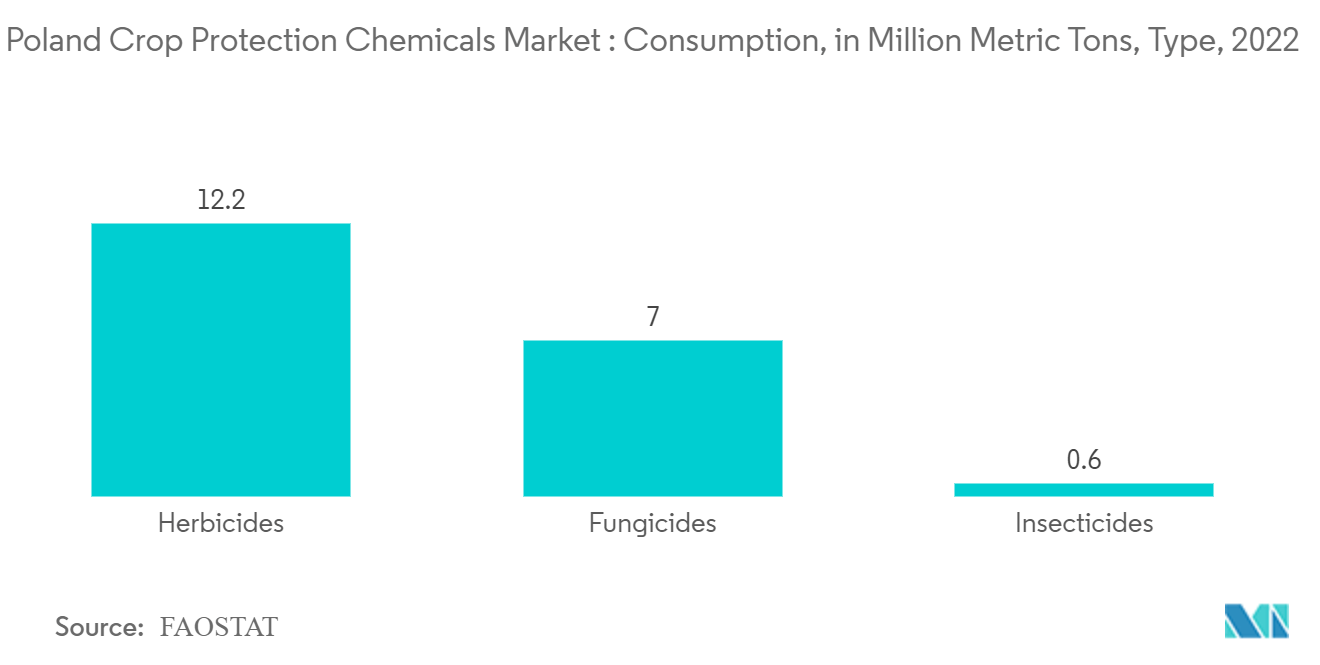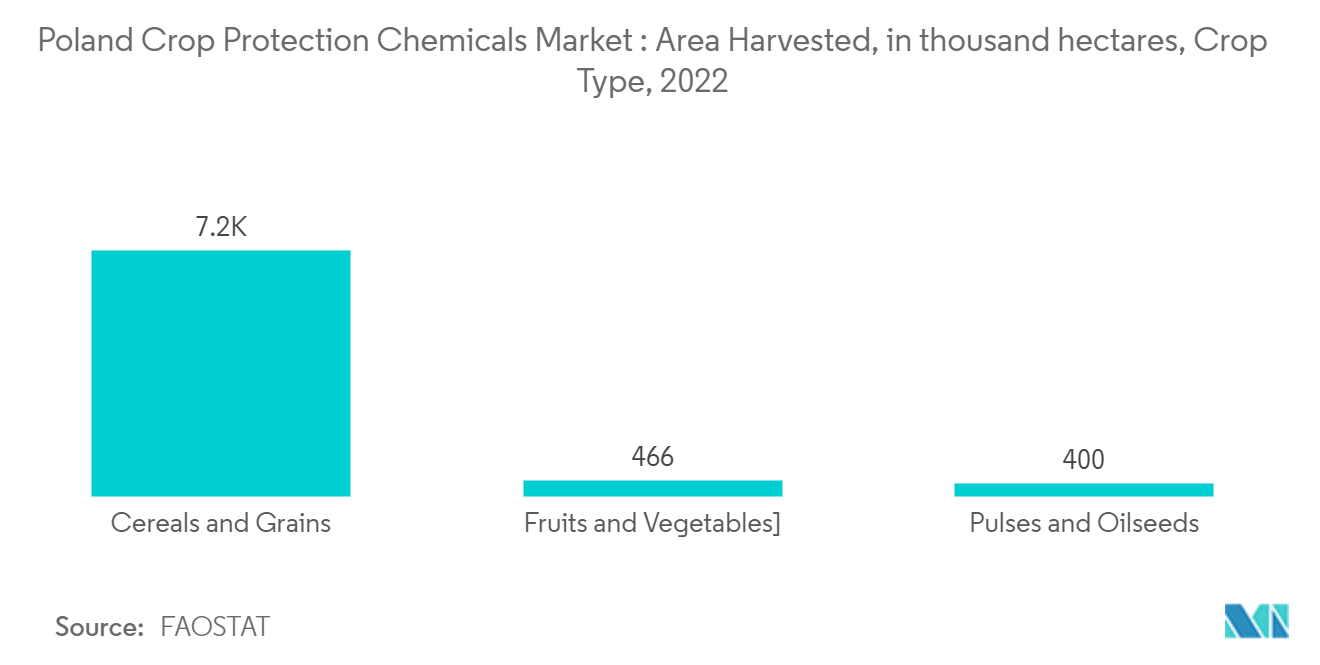Market Trends of Poland Crop Protection Chemicals Industry
Significant Herbicide Use in Agriculture Boosts the Segment
In Poland, herbicides dominate the crop protection landscape. Their ease of application, especially when compared to mechanical weed control methods, significantly drives market growth. Moreover, herbicide spraying not only streamlines the weeding process but also curtails labor costs, further bolstering product usage. Glyphosate, 2 and 4-D, atrazine, glufosinate-ammonium, paraquat, pendimethalin, dicamba, fluroxypyr, and metolachlor stand out as the most commonly used synthetic herbicides in the nation.
Herbicides command a significant share of the crop protection products consumed in Poland. Data from FAOSTAT reveals that agriculture utilized 12.2 million metric tons of herbicides, 7.0 million metric tons of fungicides, and 0.6 million metric tons of insecticides in 2022. Such pronounced reliance on herbicides underscores the segment's anticipated growth.
There's a burgeoning demand for bio-based herbicides in Poland. Crafted from renewable resources, these bio-based herbicides are poised to become the fastest-growing segment in the herbicide market. Investments in bio-based herbicide products further bolster this segment's momentum. A notable instance is Biobest Group NV, a global leader in biological control and pollination, acquiring a 60% stake in Poland's Biopartner sp z.o.o in 2022. This strategic move enables Biobest to market its bio-pesticide offerings, including herbicide solutions, across Poland.

Increase in Grains and Cereals Demand is Driving the Market
Poland ranks among the world's top producers of grain and cereals. These products hold strategic significance not only in Poland but also in the global economy. Beyond being staple food ingredients, grains and cereals play pivotal roles in distilling, brewing, milling, and various sectors including industrial, energy, and pharmaceuticals. Major crops cultivated in Poland include wheat, corn, barley, and oats. Data from the Central Statistical Office of Poland indicates that per capita consumption of these key cereals and grains rose to 106 kgs in 2023, up from 101 kgs in 2021. This uptick in consumption underscores the demand for heightened production, subsequently fueling market growth.
According to FAOSTAT, in 2022, cereals occupied 7,196 thousand hectares of cultivated land, while pulses and oilseeds covered 400 thousand hectares, and fruits and vegetables took up 466 thousand hectares. This distribution highlights the dominance of cereals in the country's agricultural landscape, especially concerning the use of plant protection chemicals. Given the extensive cultivation of grains and cereals throughout Poland, the pesticide market for these crops is anticipated to expand in the coming years.
Additionally, the introduction of herbicide solutions tailored for cereal crops is bolstering the market's expansion in Poland. A notable example is Sipcam Oxon's 2022 launch of "Tonale," a herbicide designed to combat broadleaf and grass weeds in maize. Thus, the combination of rising cereal consumption, expansive cultivation areas relative to other crops, and the debut of innovative cereal pesticide products collectively drive the market's growth trajectory.


